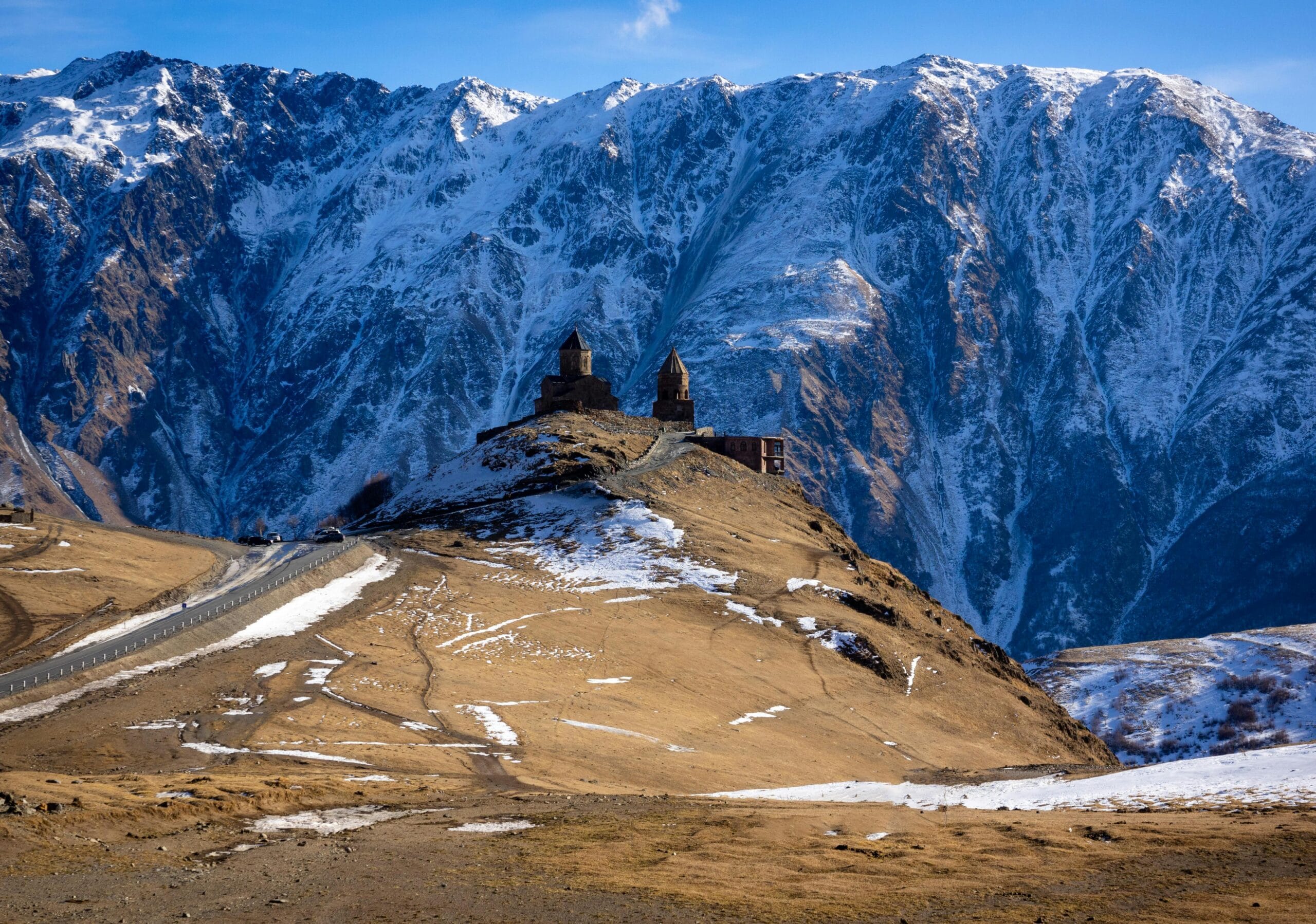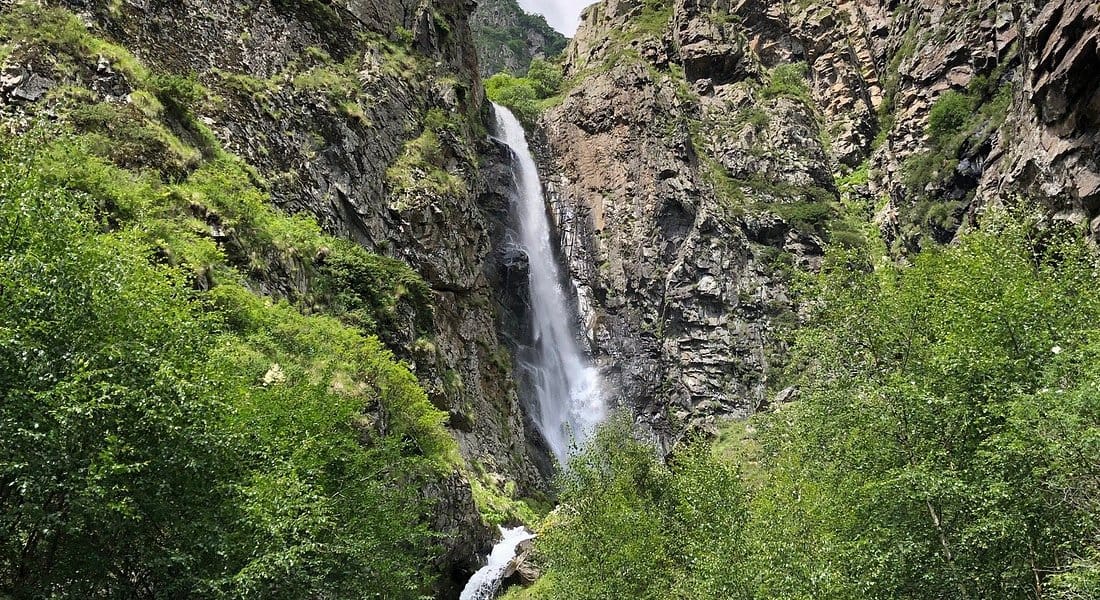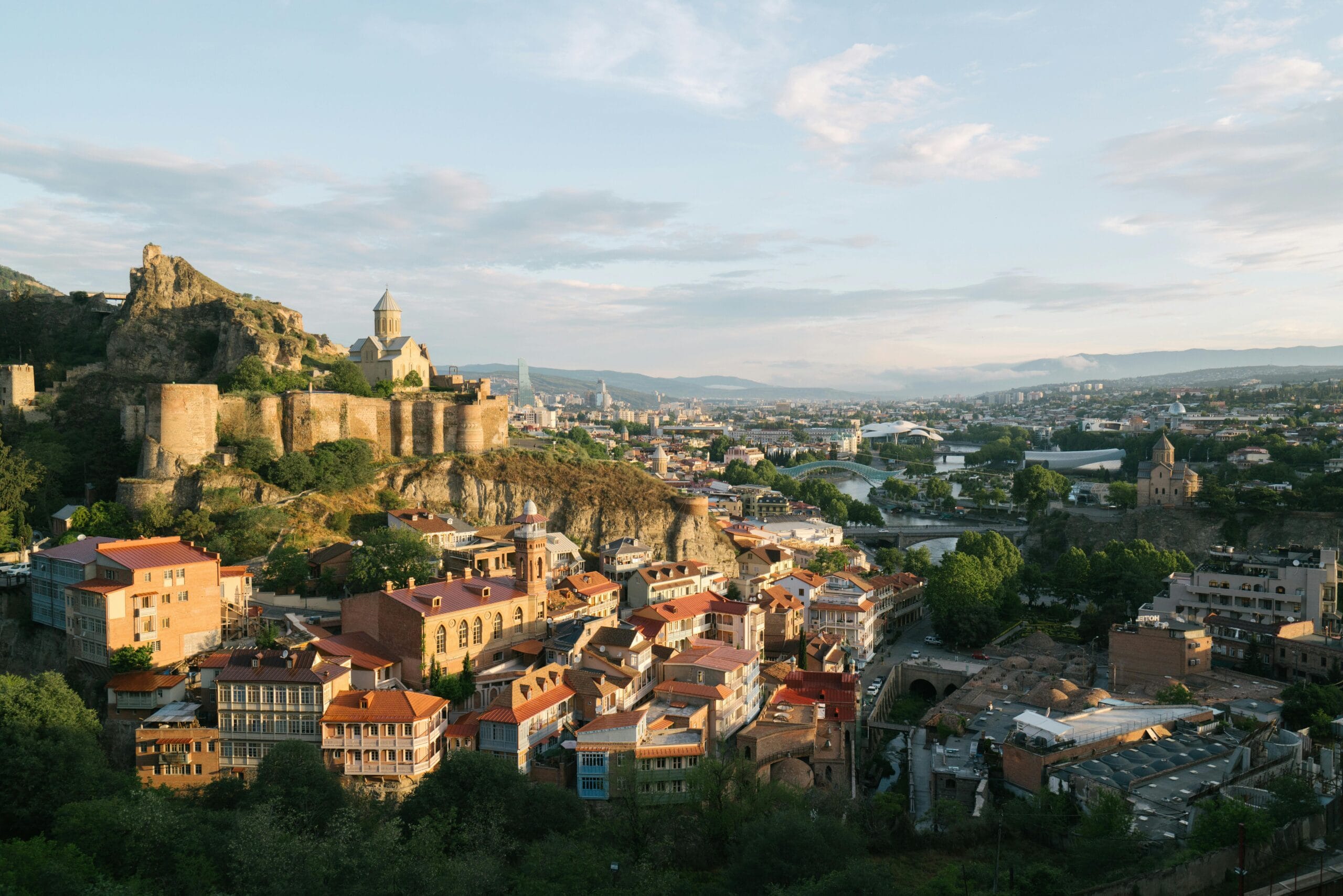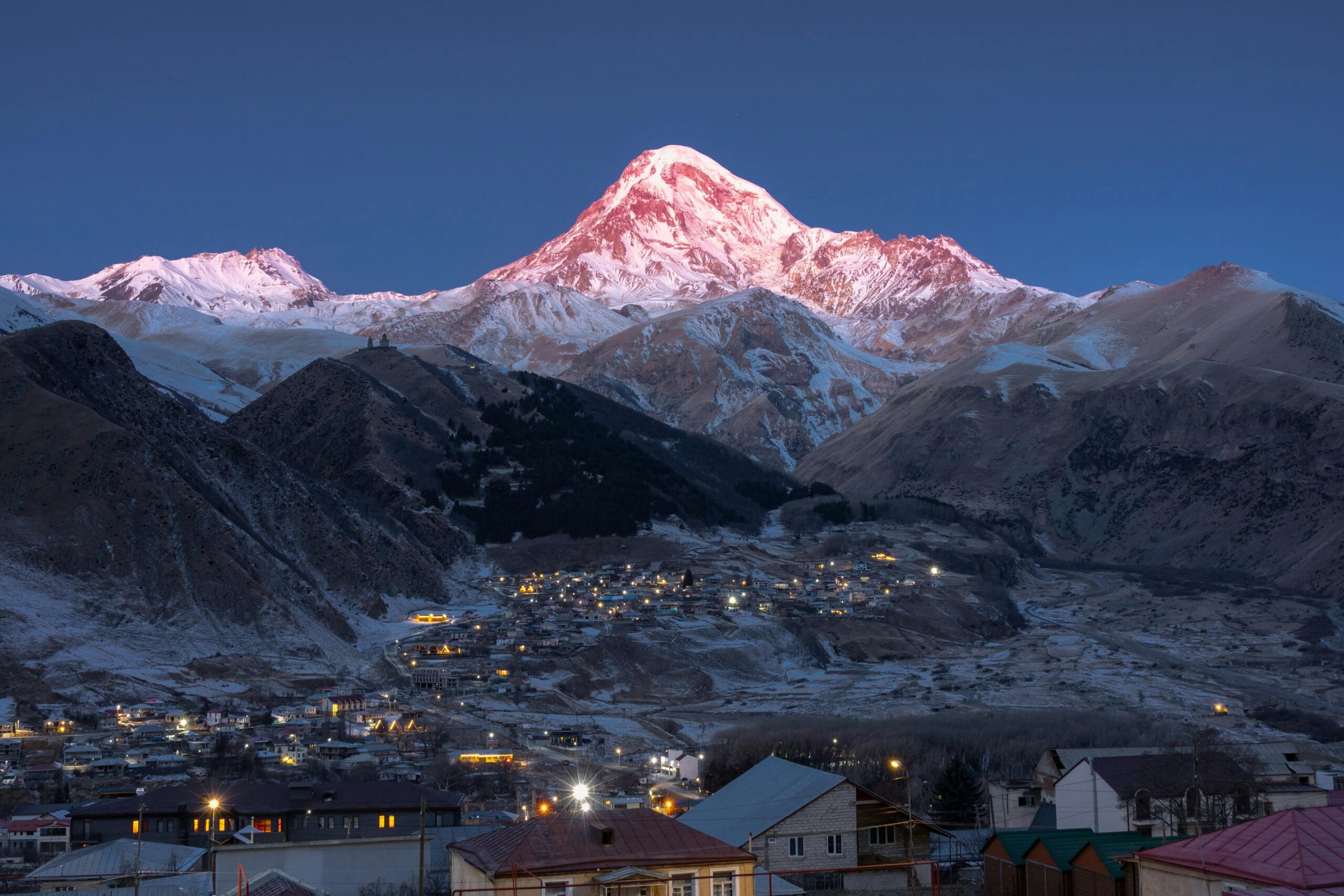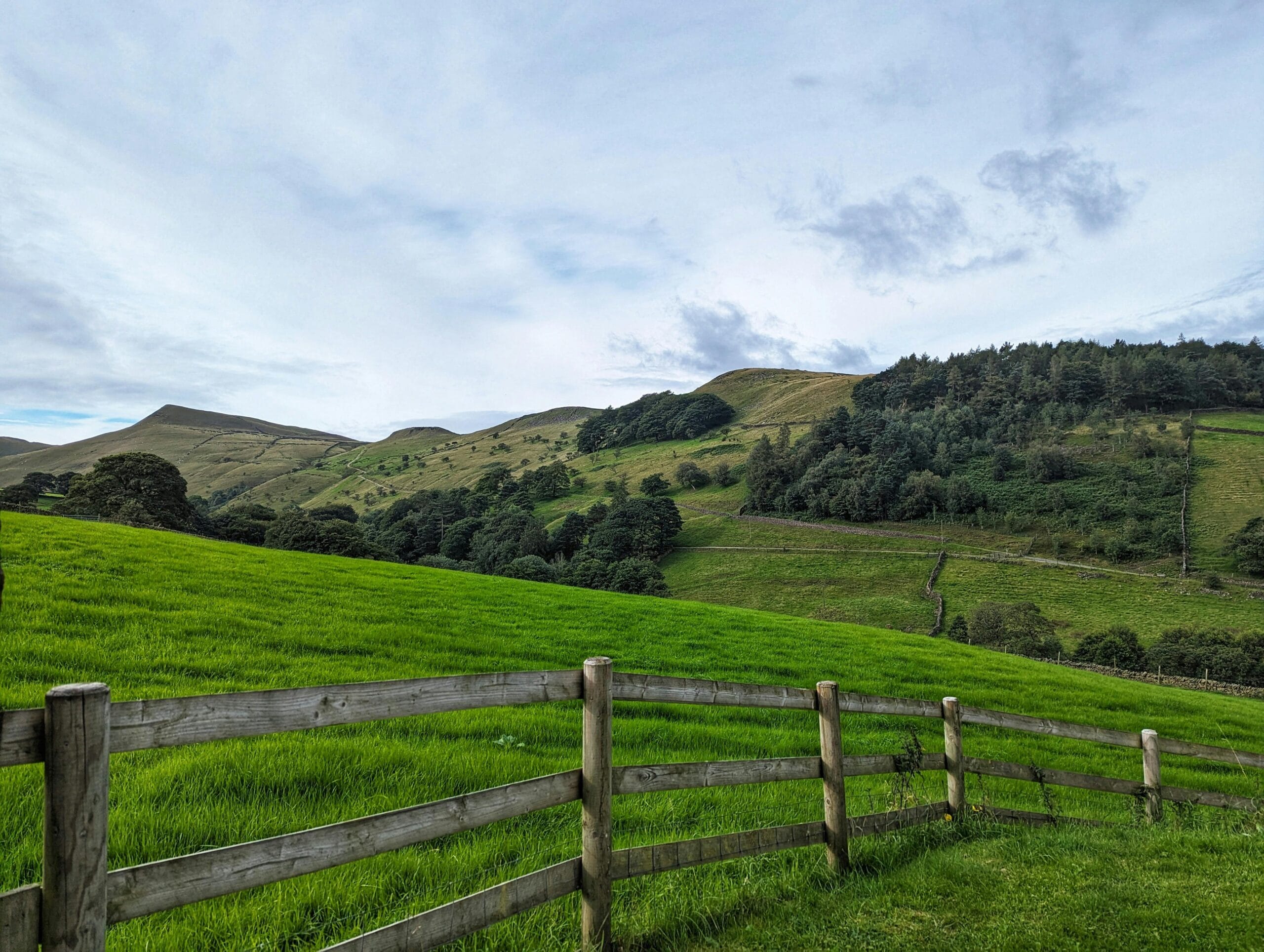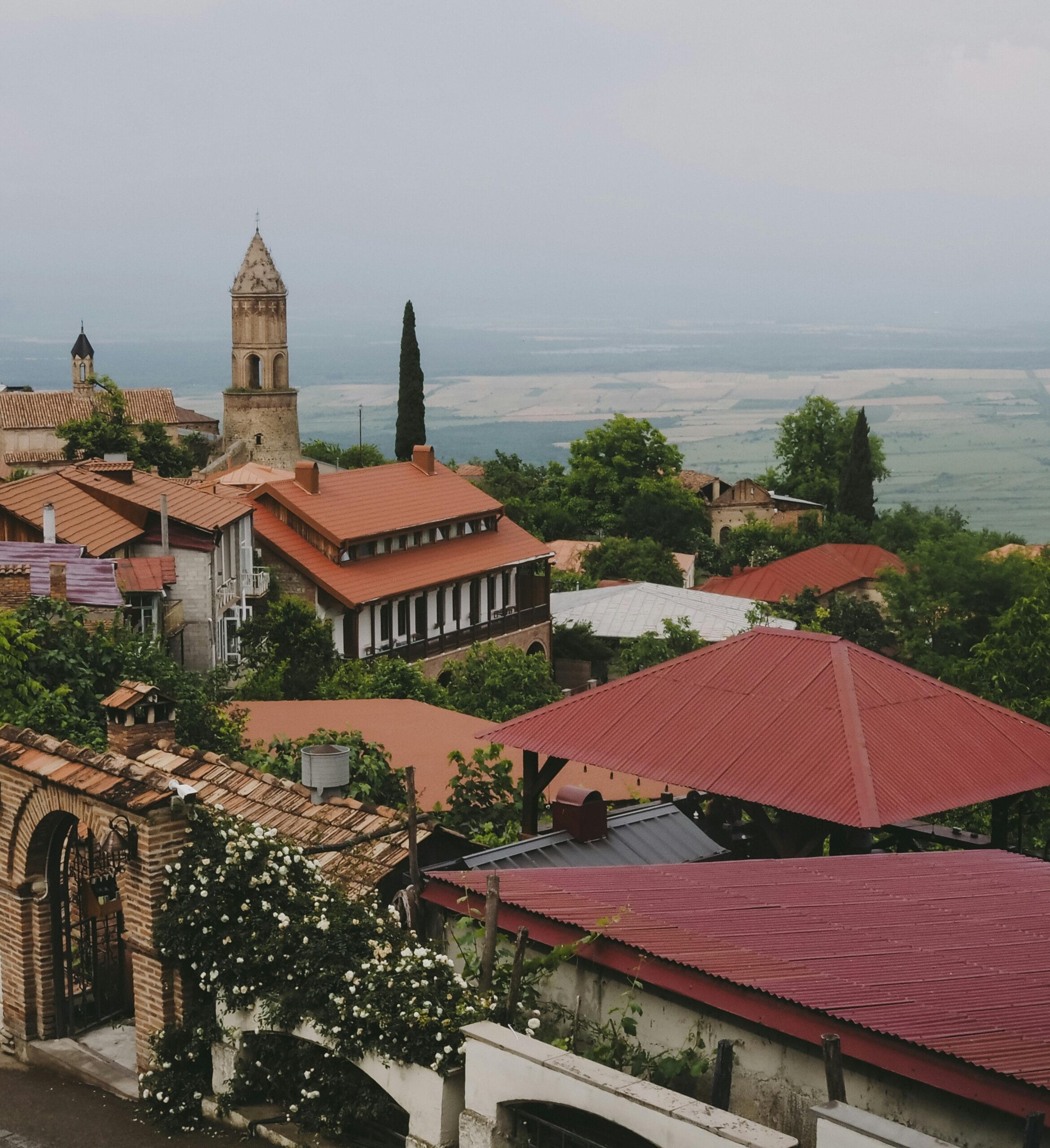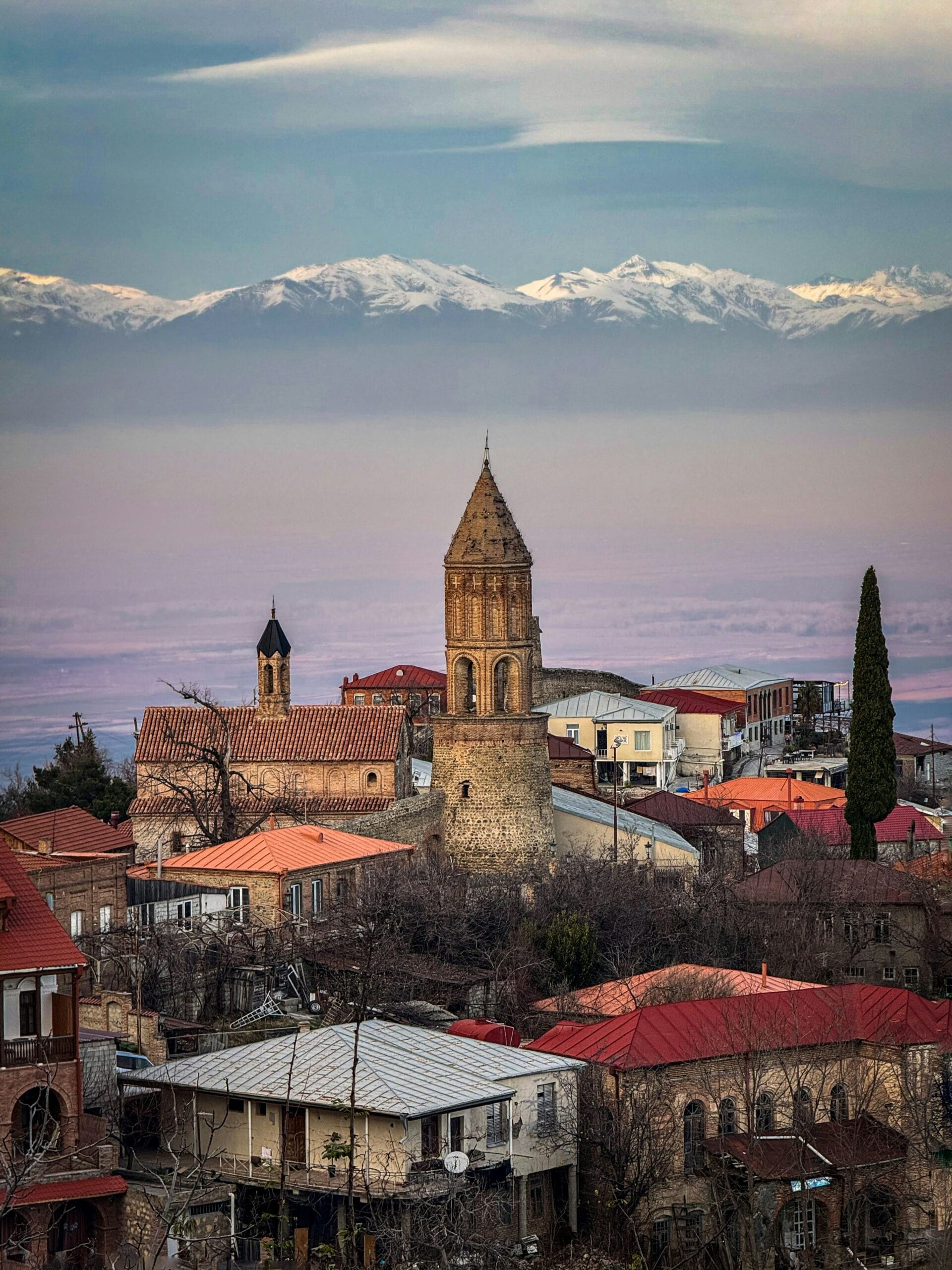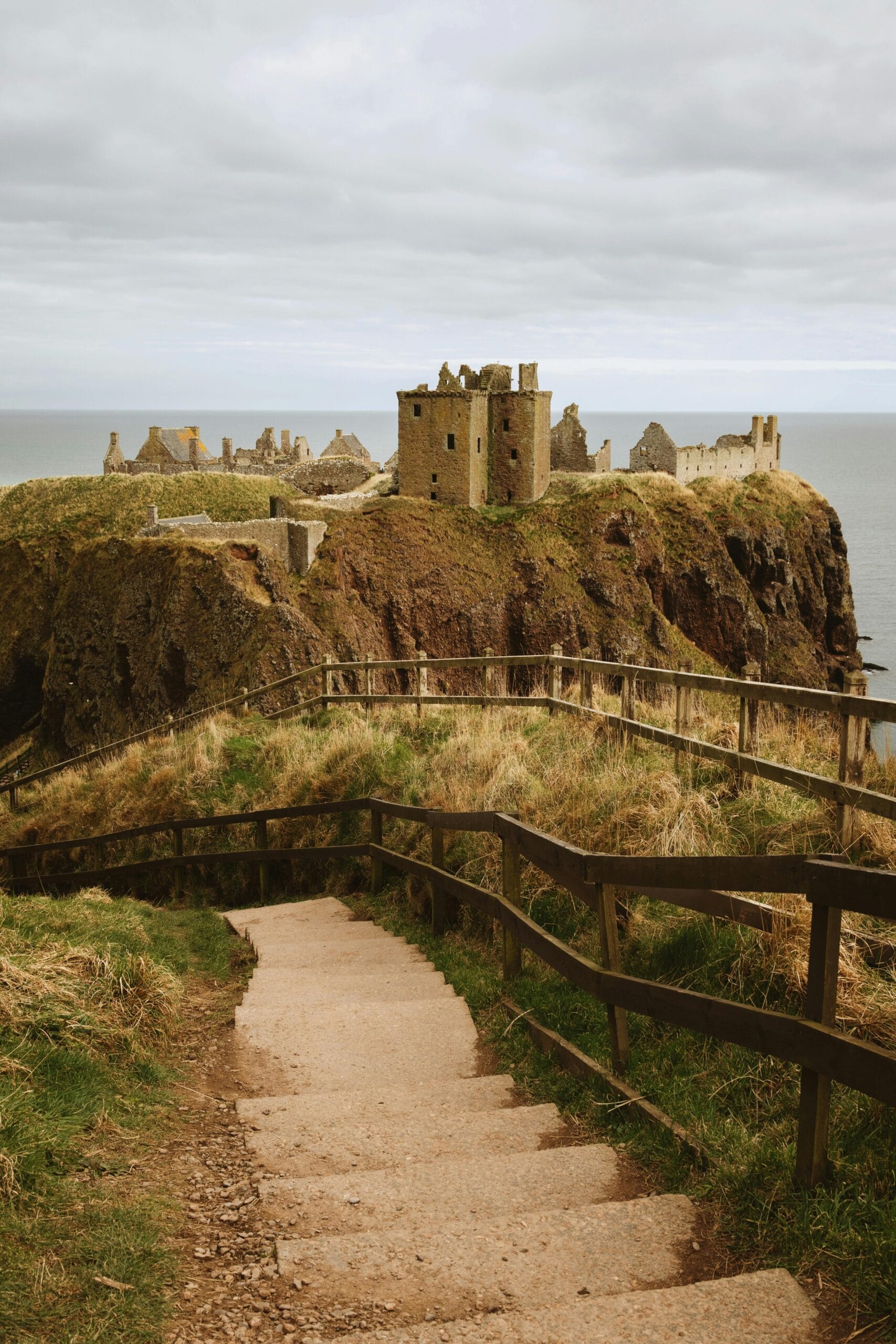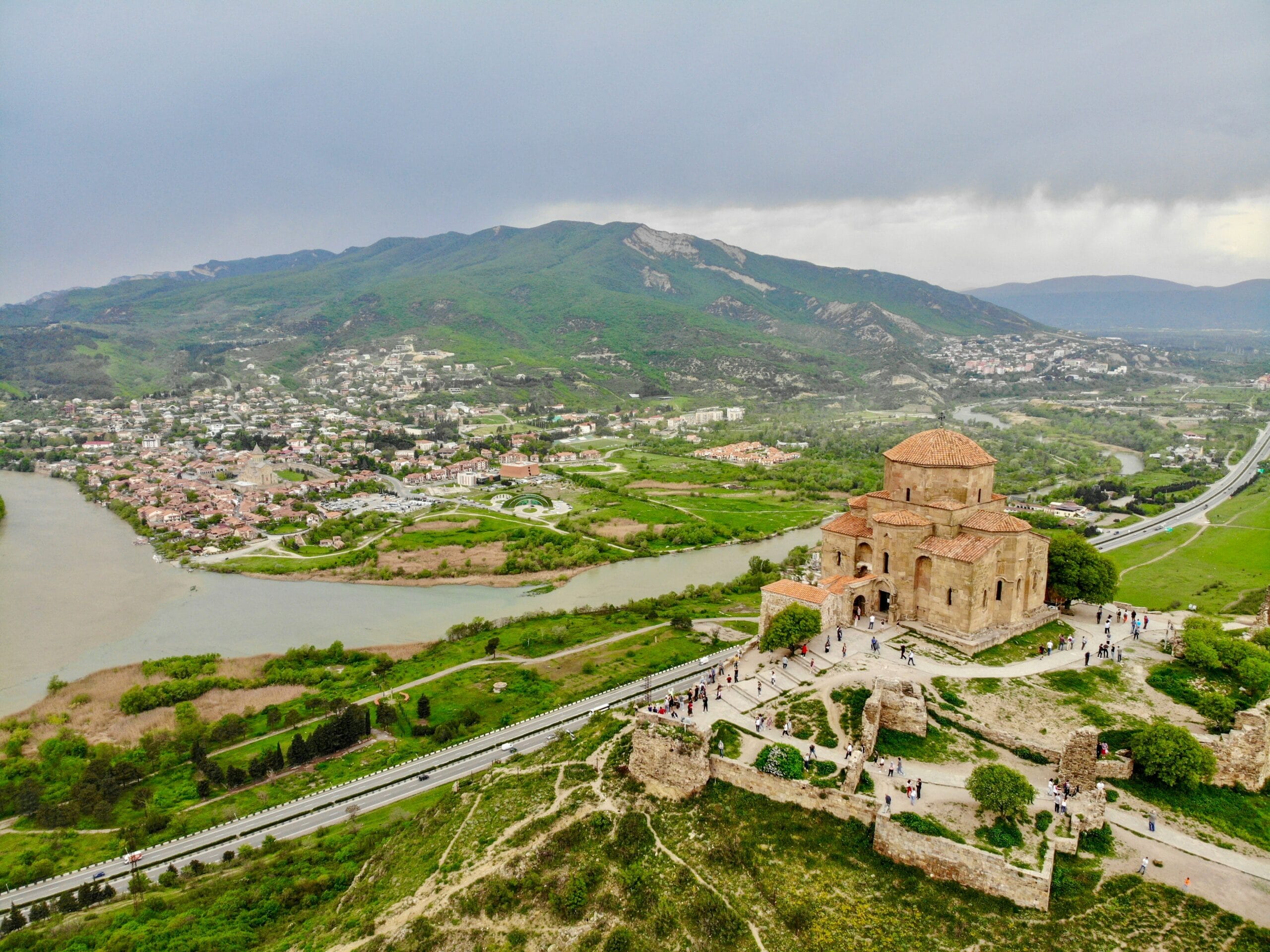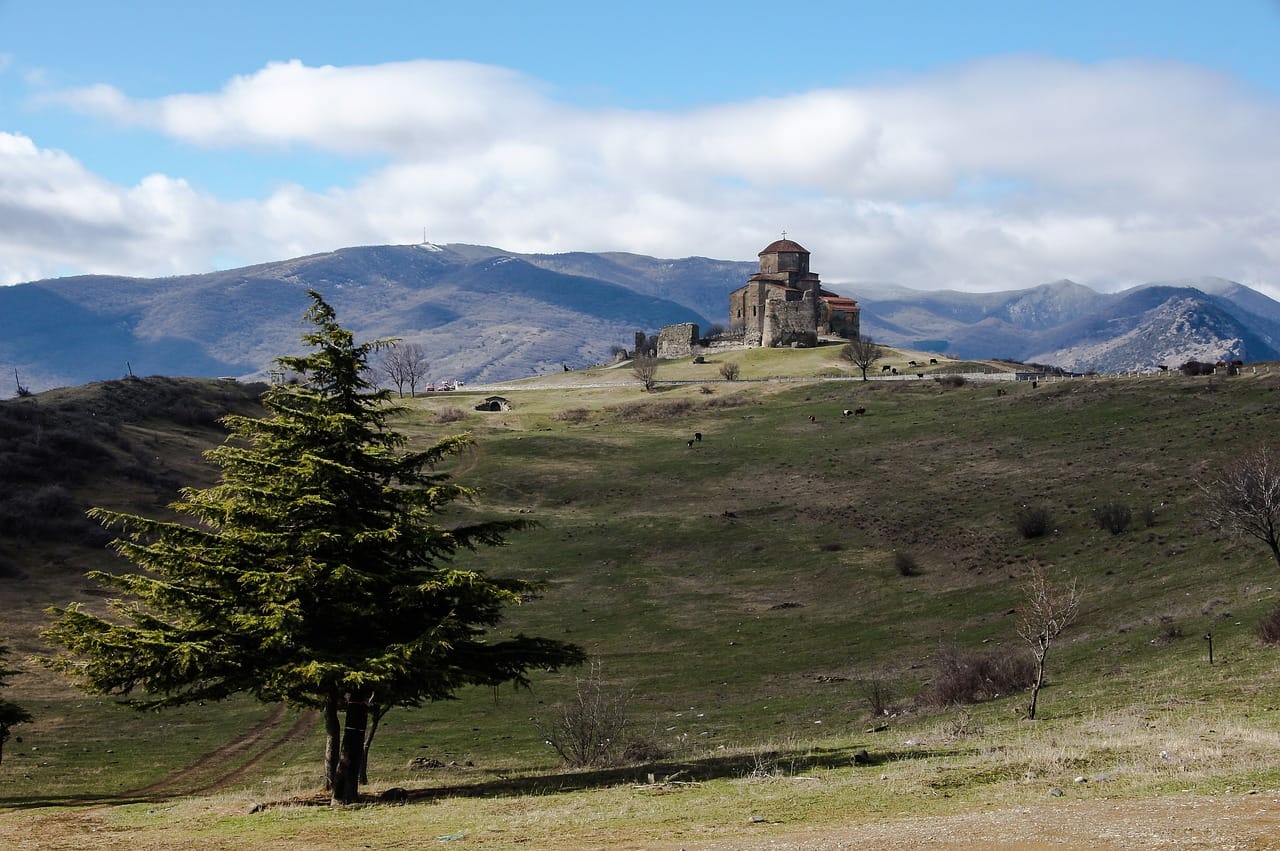Itineraries Expand all
- DAY 01: Tbilisi Tour, Mtatsminda park
05:30 AM: Hotel transfer
11:00 AM: Leaving the hotel to the Chronicles of Georgia – Famous sculpture in suburban area of Tbilisi – overlooking a Tbilisi water reservoir (known as Tbilisi sea)
01:00 PM: Lunch
02:00 PM: Mtatsminda park, famous amusement park that overlooks the city Tbilisi. Breathtaking views city center
3:30 PM: You will explore city of Tbilisi and have local tour. You will explore Mekheti church and the monument to King Vakhtang Gorgasali, the legendary founder of Tbilisi. Walk down to the Rike Park and Cross the Peace Bridge. Take the cable car from Rike Park to Narikala Fortress to enjoy breathtaking panoramic view of the city and statue of Mother Georgia standing above the old Tbilisi. Walk down to the district of Sulphur baths passing by the only mosque in Tbilisi. Stroll through the Meidan Square area full of narrow streets with cozy cafés, wine tasting bars, souvenir shops, and breathe in the living past.
08:00 PM: Free time
- DAY 02: Bodbe, Sighnaghi
09:00 AM: You will leave the hotel to visit Georgian style winery in Paterdzeuli.
12:00 PM: Your first stop will be in Bodbe monastery complex functioning as a nunnery since 1889, which according to the legend is a burial place of St. Nino, who converted Georgia to Christianity in the 4th century (you will spend about 40 minutes there)
01:30 PM: You will reach Sighnaghi, the city of love and the Royal Town, one of the crossroads of the Great Road surrounded by defensive walls with 23 towers. You will spend about 2 hour there (including lunch break) and continue your tour.
04:30 PM: You will continue to reach the best winery in town and one of the largest & ancient winery in the world
06:00 PM: Homemade dinner at a family house
10:00 PM: Arriving to hotel
- DAY 03: Tsalka, Dashbashi
09:00 AM: You will leave the hotel to reach Algeti protected areas and Algeti reservoir and spend 15 minutes there
11:30 AM: Tsalka. Here you will explore famous bridge. The Tsalka Diamond Shaped Bridge, located in Tsalka, Georgia, is an architectural marvel that spans the Khrami River. Its unique diamond shape and stunning design make it a captivating landmark, offering visitors a picturesque view and an unforgettable experience.
11:45 AM: You will reach village Dashbashi. You will spend there 30 minutes and afterward you will start hiking to Dashbashi canyons (Optional hike)
01:00 PM: You will reach amazing Dashbashi canyons and spend 1 hour there. Dashbashi canyons is one of the most impressive natural monuments of Georgia, green and beautiful whole year long.
02:00 PM: You will visit historical church at the edge of canyon in the village and from the church you will see breathtaking view of the road descending into the Ktsia gorge. You will spend there about 30 minutes. Afterward you will return in the village, explore places and have a rest.
04:00 PM: Transfer to Tbilisi
06:00 PM: Free time
- DAY 04: Ananuri, Gudauri, Gevelti Waterfall & Kazbegi tour
09:00 AM: Leaving the hotel, we will take over the Georgian Military Highway up North, towards the border with Russia.
10:00 AM: You will reach Jhinvali Water reservoir created during the soviet era. You will spend 20 minutes there and promptly continuing your way to Ananuri complex, a former residence of Argveti Dukes.
11:30 AM: You will reach Ananuri complex. The complex features churches and towers dating back to the 16-17th centuries, beautifully overlooking the Jhinvali reservoir. Because of local uprising and clashes Ananuri was controlled by different Dukes. In the complex you will see two churches from 17th century. The older one was built in 1689 and has sophisticated ornaments of grapes and crosses symbolizing soul of Georgian culture. You will spend about 40 minutes there.
12:30 AM: Continue your drive to see the conjunction of two small mountain rivers famous for the fact that being different in color they still keep their own colors even after merge. Continuing on the way you will have a chance to taste the mineral mountain springs in Mleta.
01:00 PM: Pasanauri village: optional rafting activity
03:00 PM: Transfer to village Gveleti. you will hike the main path and visit Gveleti small waterfall. Taking pictures and going through the second train towards Gveleti big waterfall. After exploring small waterfall it’s time to reach big waterfall and take a rest, quick lunch.
07:30 PM: Transfer to Gudauri
07:45 PM: Free Time
- DAY 05: Gregeti Trinity Church & Juta Lake
09:00 PM: After arriving to Kazbegi (Stepantsminda) we will have a hike to reach Gergeti Trinity Church (You can have a 4×4 ride to reach the church if you don’t want to hike)
09:30 AM: First Destination will be Juta. Change your vehicle to 4×4 vehicle which will bought you to the village of Juta. Upon arrival in the village of Juta, we will park the car, as the road is not accessible beyond this point. From there, we will embark on a scenic hiking tour, covering approximately 7 km to reach the charming 5th Season Camp. You’ll have plenty of time to relax and enjoy the stunning surroundings before we hike another 7 km back to the car. Afterward, we will transfer back to city, change vehicle again and transfer to Gudauri.
08:00 PM: Free time
- DAY 06: Truso Valley
09:00 AM: You will be already in a very special valley called Truso. We will drive to reach the hiking starting point. The Hike will be along the River Truso includes several villages near which offers some unforgettable panoramas, architect, culture and experience of tasting mineral waters.
1:00 PM: Village Ketrisi Zakagori old fortress You will reach small mineral lake in the middle of Turso valley and taste other minerals including salty waters nearby.
03:30 PM: We will drive over the Cross Pass and make short stop at the Soviet-era “People’s Friendship” mountain view point overlooking a deep gorge of Caucasus mountain range
05:30 PM: Transfer back to Tbilisi.
06:00 PM: Free time
- DAY 07: Juvari Monastery, Gori, Uplistsikhe & Mtskheta
09:00 PM: You will reach Jvari Monastery (6th – 7th cc), the most important religious center and an architectural masterpiece of mediaeval Georgia. The Monastery stands on the rocky mountain top at the confluence of the Mtkvari and Aragvi rivers, overlooking the town of Mtskheta, which was formerly the capital of the Kingdom Iberia.
11:30 AM: Gori Fortress is a 13th century castle in Georgia, situated on a hill above the city of Gori in the Shida Kartli region of eastern Georgia. You will be able to see Joseph Stalin’s Museum complex consists of memorial house, where Stalin was born, exposition building with tower and Stalin’s personal coach with interior. In Gori, you will spend 3 hours
02:00 PM: After Exploring Gori, you will reach the oldest rock-hewn town Georgia, called – “Uplistsikhe” dates from the frist millennium BC. Built on a high rocky left bank of the Mtkvari River, it contains various structures dating from the Early Iron Age to the Late Middle Ages. The complex contains dozens of ancient artificial caves and holes. The latter were used for sacrificing animals during pagan time.
02:30 PM: Lunch
03:30 PM: Mtskheta tour, Passing through the famous souvenir market, Continue tour to the old Capital town of Georgia where located Svetitskhoveli Cathedral. The present Svetitskhoveli Cathedral was built between 1010 and 1029 by the architect Arsukidze, at the invitation of the Catholicos Melchizedek I of Georgia. The cathedral is surrounded by a defensive wall, built of stone and brick during the reign of King Erekle II (Heraclius) in 1787.
05:00 PM: Transfer to Tbilisi
07:10 PM: Transfer to airport
Trip Info
- Accomodation4-star hotel stay in Tbilisi and a 5-star hotel in Gudauri, featuring a heated pool, jacuzzi, and sauna — perfect for relaxing after full days of hiking.
- MealsBreakfasts included
- Guiding methodGeorgian Touristic guide (English speaker)
Trip Includes & Excludes
- International flight ticket
- Airport Pickup
- Airport drop-off
- All internal transfers (bus, van, 4×4, etc.)
- Accomodation
- Breakfasts
- Cultural workshops or experiences
- Daily water bottle
- Drone footages
- Entrance fees to parks, museums or landmarks
- Guided sightseeing tours
- Hiking trail assistance
- Local food experiences
- Local Guide
- Wine tasting
- Sim card
- Travel Insurance
- Boat ride
- Daily Snacks
- Lunches
- Dinners
- Porters
- Rafting
- Tips for local team
Availability
FAQ's Expand all
- What will the weather be like during our trek?The best time to trek in Georgia is late May to early October, when the weather is warm, the mountain passes are accessible, and the trails are at their best. June to September is ideal for high-altitude treks like Kazbegi, Tusheti, and Svaneti. May and October are great for lower-altitude hikes, with fewer crowds and cooler temps. Avoid November to April for most treks due to snow and closed routes in the mountains.
- What about the Visa to Georgia?Lebanese passport holders benefits from Visa Free entry to Georgia Non Lebanese citizens are requested to contact us to give them the right procedure Please note: Entry requirements can change at any time. It is the traveler’s responsibility to verify the latest regulations based on their nationality. The Sports Guru cannot be held responsible for visa denials or travel interruptions due to incomplete or incorrect documentation.
- Who Can Join This Trek?First-time Trekkers with Basic Prep: If you’re in decent shape and can train for a couple of months, you can successfully complete this trek—even without prior altitude experience. Outdoor Lovers & Hikers: Those used to long walks and nature trails will adapt quickly. Generally Healthy Individuals: If you have no major issues with your heart, lungs, or mobility, you’re good to go. Mentally Determined: Your mindset matters—staying positive and resilient plays a big role. Who Might Face Challenges? People with Serious Joint/Knee Pain: The trek includes many stair sections that can be tough on joints. Those with Breathing Difficulties at Altitude: If you have known respiratory conditions, this might not be suitable. Anyone Unable to Hike 5–7 Hours Daily: Multi-day endurance is key—be honest about your fitness level. With the right preparation and attitude, ABC can be a life-changing and reachable goal.
- Do I have to worry about altitude sickness?The highest peak we may reach is at 3,200m which is below the maximum range before causing Acute Mountain Sickness (AMS) – You are safe Common mild symptoms include: Light headache Dizziness Nausea or reduced appetite Fatigue Trouble sleeping These symptoms are typically short-lived and tend to fade as your body acclimatizes. With proper pacing, hydration, and rest, most trekkers complete the trek without serious issues. Severe conditions like HAPE (fluid in lungs) or HACE (brain swelling) are extremely rare on this route.
- What to expect as internal and domestic flights?Commercial Domestic Flights: Operated by national or low-cost airlines (e.g., Air India, Qatar Airways Domestic, Turkish Airlines Domestic, etc.). Used for city-to-city travel. Includes standard passenger jets (Airbus A320, Boeing 737). Offers basic economy, with some business options Regional Airlines / Short-Haul Flights: Smaller aircraft for shorter routes (1–2 hours). Aircraft examples: ATR 72, Dash 8, Embraer E-175 Often used in mountainous or island regions (e.g., Nepal, Indonesia) Charter Flights: Private or semi-private flights booked for a group or event. Flexibility in scheduling and landing in smaller airports. Expensive but useful in remote areas Helicopter Transfers: For high-altitude or remote zones (e.g., Everest Base Camp, mountain resorts). Limited seating (4–6 people). Quick and scenic but weather-dependent STOL (Short Take-Off and Landing) Planes: Small aircraft for short, rugged runways (e.g., Lukla Airport in Nepal). Aircraft like Pilatus PC-6 or Twin Otter. Basic interiors, used in adventure travel Important Notes: Baggage allowance is often limited (esp. 10–15 kg in mountain flights). Weather delays are common, especially in mountainous regions. Always carry essentials in your hand luggage (jacket, meds, snacks)
- What are the tipping guidelines?Tipping Guidelines: In many destinations, especially in rural or mountain regions, local assistants, porters, and guides rely heavily on tips as a major part of their income. These individuals often work only during peak seasons, holidays, or special events, so your appreciation truly makes a difference. If you’re satisfied with the service, a tip ranging between 35 to50 per assistant for the entire trip is customary and highly appreciated. It’s a simple yet meaningful way to recognize their hard work, kindness, and support throughout the journey.
- What is the difference between all types of accommodations?Hotels: Standard to Luxury accommodations offering private rooms with en-suite bathrooms, amenities like room service, housekeeping, Wi-Fi, and often breakfast. Ranges from 1 to 5 stars. Motels: Budget roadside hotels typically used for short stays. Often basic, with direct access to parking. Common in North America. Hostels: Budget-friendly shared accommodations, often with dorm-style beds. Ideal for solo travelers or backpackers. Basic facilities and a great social atmosphere. Lodges: Located in nature or remote areas, offering a rustic, cozy vibe. Usually small and family-run with basic to comfortable amenities. Guesthouses: Locally owned homes or buildings with private or shared rooms. Often includes meals and provides a cultural experience. Dormitories (Dorms): Shared large rooms with bunk beds. Common in hostels, camps, or hiking lodges. Usually gender-separated. Minimal privacy. Cabins / Chalets: Wooden houses or cottages, often in mountain or forest areas. Range from basic to fully equipped. Camping / Tent Stays: Staying in tents or designated campgrounds. Facilities range from minimal (shared bathrooms) to glamping (luxury tents with full amenities). Homestays: Staying with a local family in their home. Offers a real-life cultural experience, usually includes meals. Airbnb / Vacation Rentals: Private apartments or houses rented for short-term stays. Great for privacy and self-catering. Boutique Hotels: Stylish, themed, or design-focused hotels, smaller than chains, often independently owned with unique experiences. Bed & Breakfasts (B&Bs): Small lodging establishments offering overnight stays and breakfast. Often run by families or individuals. Resorts: All-inclusive accommodations with pools, restaurants, entertainment, and activities. Often used for beach or mountain vacations. Eco-lodges: Environmentally friendly accommodations in natural areas, focusing on sustainability and conservation. Monastery Stays: Budget and spiritual stays in monasteries, often simple and peaceful, used especially in Europe or Asia. Caravans / Campers / Vans: Mobile accommodations with beds and kitchens, ideal for road trips. Can be self-driven or rented. Boat Stays / Houseboats: Floating accommodations on rivers, lakes, or oceans. Found in places like Kerala (India), Amsterdam, or the Nile. Capsule Hotels (Japan/Korea): Tiny pod-style sleeping spaces, great for solo travelers. Privacy but no full rooms. Budget and high-tech.
Map
TZ-2711- Best price guaranteed.
- Best experience guaranteed.
- Professional guide.

